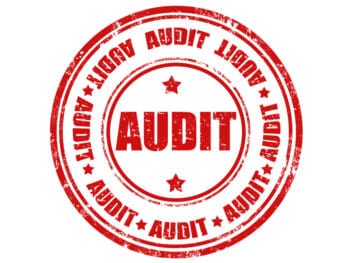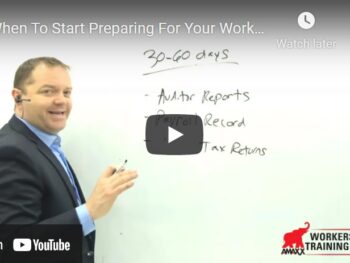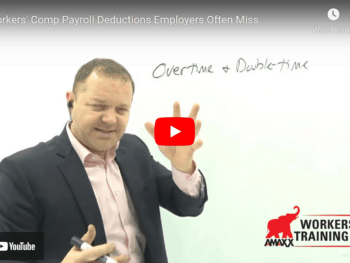If I were to draw a fine line to distinguish small businesses from larger ones, you would see larger businesses have more formalized business practices than smaller businesses. Small businesses are more casual – there is probably a much smaller gap between the owner and the front line employee. In fact, in small businesses, first names are generally used, casual attire is pretty common, and the business culture operates on a far more intuitive level than you would find in larger businesses who often write out their standard operating procedures, rules, and regulations.
Therefore, it is incumbent upon small businesses to formalize their operating procedures, particularly with respect to work schedules and safety. Just because your employees call you “Bob” and get a hand written pay check signed by you each week, doesn’t mean you should relax business practices, safety, and ethical standards. After all, this is a business and chances are your livelihood is tied up in its success.
So the first thing small business owners do is make explicit those operating rules and make sure employees – even if you have only one employee – get a copy. Operating rules include items like,
time of arrival, lunch hour, time of departure, dress code, etc.
Again, for one employee or 10, include a brief job description so everyone knows what is expected of the employee. List job-related safety standards. You may have to do some research to figure out what the safety standards are, but it is worth the effort.
Example: If you have a nanny working for you, you research the best way to pick up and carry children to avoid back injuries and carpal tunnel issues.
If you have a mechanic or two working for you, research auto safety, and train your employees on the importance of wearing protective gear, and observing safety with respect to auto hoists, jacks, and the like. Have monthly “tool box” chats, post signage and let your employees know you are serious about safety. Train your employees on how to safety perform tasks and insist they do perform them the safe way. Let them know you will hold them to some degree of accountability for injuries resulting from known safety risks if it is discovered they acted outside the safety zone, so they will think twice before taking unsafe risks.
Many states do not require employers with fewer than 3 employees to have workers’ comp insurance. The thing is, just because it isn’t required doesn’t mean you still don’t need workers’ comp insurance. After all, work comp insurance is there to protect your employees – but it also protects you from the unmitigated costs that might hemorrhage your bank account from a work-related accident.
Workers’ comp management is the flip side of safety. If one of your workers is injured on the job, all of your workers should receive training in post-injury response procedures. Employees should be expected to complete all required reports: the employee accident report, witness and supervisor reports. Injured employees take your version of the workability form with them to the treating physician and this form is completed and faxed back to you within 24 hours of the accident.
If you don’t know where to begin, I suggest you take a workers’ compensation assessment. Most of them are for larger businesses, but really, there is something in there for everybody. Go through the questions, and answer the ones that apply to you. Once you click “submit” the assessment will generate recommendations. Go through the recommendations. They give you much to think about, but they also contain action steps as well.
Prioritize the steps you want to begin with first. I suggest you begin with implementing a formal safety program – scaled down to your size of course – educate your employees, and let them know you take safety very seriously.
Secondly, formalize a post injury response program. This includes the statements we discussed before, outlining plans for first day phone calls and weekly follow up meeting talking points. Use the workability form as a pivotal information vehicle going between you, the employee, and the treating physician. Plan a strong communication program that includes a workers’ compensation brochure and/or laminated wallet card. (Chances are, small business employees don’t wear lanyards, but everyone has a wallet.)
Find out what your medical treatment options are for the state you live in. Do you get to choose the treating physician or does the employee get to choose? Does the employee get first choice, and then have your approval for subsequent physician choices? You need to know what your options are going forward.
Remember, even if the employee gets to choose the physician, you can make an excellent clinic available nearby. You still get to choose how the recovery is handled and how involved you are in the employee’s recovery. Those weekly phone conversations, (and when the employee is more recovered — onsite visits) lets the employee know you have not forgotten him/her and that you fully expect a return to work in some modified duty capacity as soon as possible.
Meanwhile, you can work with the treating physician, using the Work Ability Form, to modify the employee’s job description so work can perform within the worker’s limitations.
In the event the employee was seriously injured, and the chances for modified duty are dwindling, you must be prepared to negotiate for a settlement, working cooperatively with your insurance company. Don't know who your insurance company is? Ask your agent or broker.
If you have purchased a policy online, make sure to keep it in a separate file. In almost all states, you will be required to post a statement about workers' compensation; this usually identifies the name of your insurance company and lists the phone number to call if there is a claim (injury.)
Also document safety training and implementation because this may mitigate culpability at some point. You may want to look into subrogation if the injury was caused by faulty equipment. (workersxzcompxzkit)
In the meantime, take the assessment. Find out what you don’t know. Develop an action plan suitable to you and your business. Include safety as well as workers’ comp management. Let your employees know you take safety and workers’ comp management very seriously. After all, it is your business that is at stake here.
In the meantime, take the assessment. Find out what you don’t know. Develop an action plan suitable to you and your business. Include safety as well as workers’ comp management. Let your employees know you take safety and workers’ comp management very seriously. After all, it is your business that is at stake here.
Author Rebecca Shafer, J.D. President, Amaxx Risks Solutions, Inc. has worked successfully for 25 years with many industries to reduce workers' compensation costs, including airlines, health care, manufacturing, printing/publishing, pharmaceuticals, retail, hospitality and manufacturing. She can be contacted at: RShafer@ReduceYourWorkersComp.com or 860-553-6604.
Podcast/Webcast: Claim Handling Strategies
Click Here:
http://www.workerscompkit.com/gallagher/podcast/ Claim_Handling_Strategies/index.php
Do not use this information without independent verification. All state laws vary. You should consult with your insurance broker or agent about workers' comp issues.
©2010 Amaxx Risk Solutions, Inc. All rights reserved under International Copyright Law. If you would like permission to reprint this material, contact Info@ ReduceYourWorkersComp.com.













